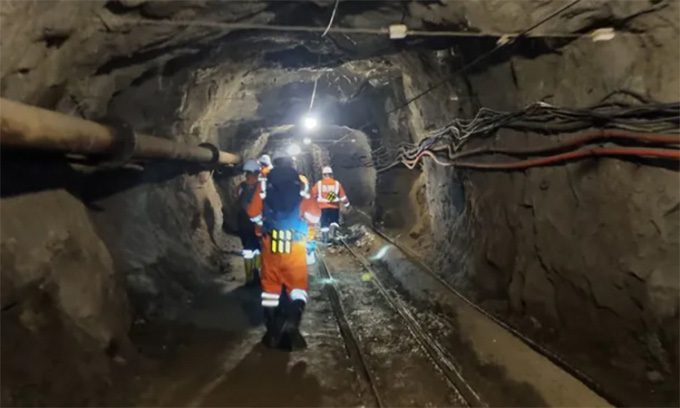A massive hydrogen deposit hidden beneath the chrome mine, with an escape rate of about 200 tons per year, has been discovered in Albania.

A team of scientists exploring the Bulqize mine under the guidance of local miners. (Photo: FV. Donzé).
A recent study published in the journal Science on February 8 reveals that a massive hydrogen deposit may lie deep beneath the Bulqize chrome mine in Albania. This deposit is located within a fragment of the Earth’s crust and mantle that once rested at the ocean floor and was uplifted when its tectonic plate slid beneath another. This fragment was pushed onto land between 45 and 15 million years ago, forming a 3,000 km long rock belt known as ophiolite, stretching from Turkey to Slovenia.
Ophiolites are found worldwide, and previous studies have documented hydrogen seeping from drill holes and mines in these structures. In this new research, Laurent Truche, a geochemistry professor at the University of Grenoble Alpes, and his colleagues discovered the hydrogen deposit thanks to the huge hydrogen flows emanating from lakes within the Bulqize mine. Such hydrogen deposits could be exploited to provide carbon-free fuel, but the necessary infrastructure is lacking, and extracting this gas is inherently challenging.
Truche and his team explored the deepest layers of the Bulqize chrome mine and recorded an immense amount of hydrogen gas seeping from the rocks and bubbling up from the lakes. Their measurements indicated that at least 200 tons of high-quality hydrogen escape from the mine each year, marking one of the highest natural hydrogen flow rates recorded to date.
Hydrogen is a highly flammable gas. The high concentration of hydrogen in the Bulqize mine may be the cause of three explosions since 2011, resulting in the deaths of four miners and injuring many others. “Our research will help to better understand this phenomenon and enhance safety measures,” Truche stated. The new study also clarifies the geological conditions that lead to large natural hydrogen reserves underground.
Truche’s team estimates that up to 50,000 tons of hydrogen may be hidden in the mine, enough to maintain the high hydrogen flow rate for approximately 238 years. “What makes this discovery unique is the nearly pure hydrogen gas flow that we observed. In the context of energy transition, our findings could significantly impact the search for new energy sources,” they noted.




















































